Just a few hours east of Athens is Ancient Corinth, a quaint sleepy village with a gorgeous archaeological site. If you ask us, one of the most perfect day trips is going from Athens to Corinth.
Bear in mind that the modern city of Corinth is located approximately five kilometers northeast of Ancient Corinth, which was one of the most important cities of Ancient Greece.
Read on to discover everything you need to know: How to get from Athens to Corinth, Corinth’s history, what to do once you’re there, and why it’s the perfect day trip from the Greek capital.

A little backstory on Corinth
In ancient times, Corinth thrived as a bustling center of trade, culture, and exchange. This ancient city is perhaps best known for being an ancient hub of artistic and commercial activity, producing innovations in pottery forms, highly valued local goods, and at one point leveraging this output and their strategic location on the Isthmus to become the one of the richest city-states in Greece.
Today, you can still see several of the ancient city’s architectural marvels, all with a gorgeous view of the Corinthian gulf.

Traveling from Athens to Corinth
There are three ways to travel from Athens to Corinth:
- Car: Simply rent a car, hop on the national highway, and it’s just about an hour’s drive away.
- Suburban railway: Take the Proastiakos suburban railway from Athens Central Railway Station (Larissa Station) to Corinth Station. It’s an easy journey lasting about an hour and 15 minutes.
- Bus: KTEL, the Greek intercity bus, operates buses between Athens and Corinth. You can catch a bus from various terminals in Athens, such as the Kifissos bus terminal. The journey takes between one to one and half hours, depending on traffic and stops.
Once in Corinth you will have to take a taxi from the bus or train stop. It’ll take just a few minutes to reach the village and the archaeological site of Ancient Corinth.
Insider’s Tip: However you choose to get there, make sure you check the return trips for later that evening and book your tickets early.

Exploring Ancient Corinth
Begin your visit at the archaeological site of Ancient Corinth, where you can see the remains of this once-great city.
This archaeological site is sprawling, and has ruins and monuments from Archaic, Classical, Hellenistic, Roman, and Byzantine periods. If you loved the National Archaeological Museum of Athens, you’ll definitely mark this day as one of your favorites.
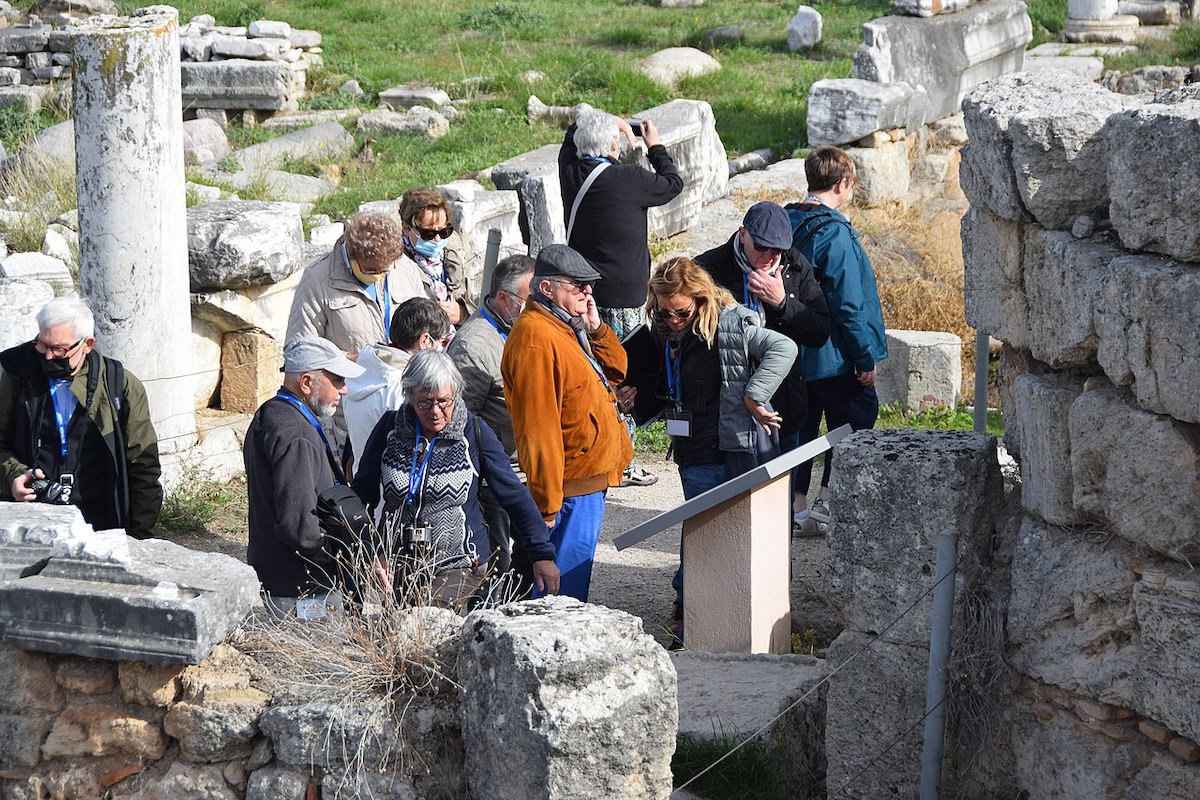
Temple of Apollo
The site opens with the breathtaking view of the Temple of Apollo. This iconic ancient Greek sanctuary stood as a testament to architectural splendor and religious devotion. Perched prominently upon a hill overlooking the city, this Doric-style temple was dedicated to the god Apollo, the Olympian deity of music, art, and light.
The temple was constructed in the 6th century B.C.E., and boasted a distinctive monolithic limestone column, considered one of the earliest examples of such construction.
Today, only a handful of the Doric columns remain, but the sheer size of them leaves an impression of the grandeur of the former temple.
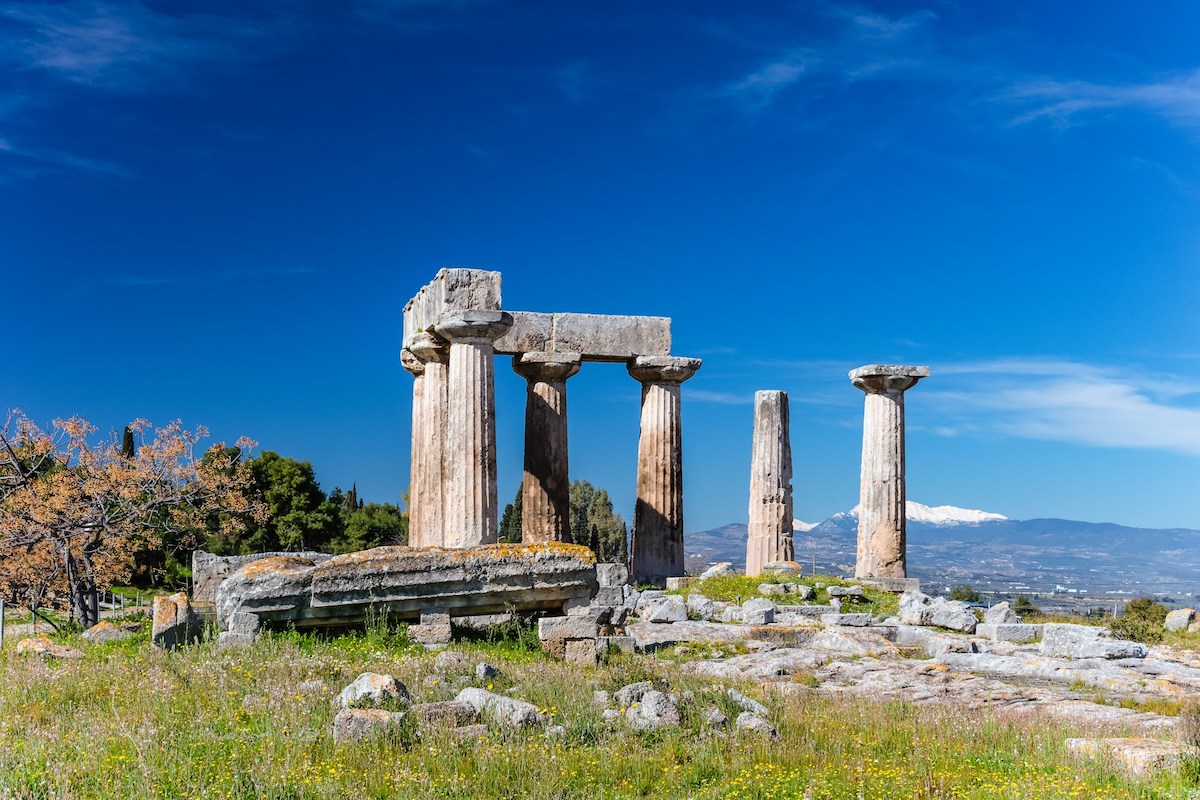
Fountain of Peirene
This ancient fountain was a crucial fresh water source for the city. The fountain had not only a practical function but was also an architectural beauty–it featured a series of arched niches, imposing columns, and was decorated with various marble ornamental elements.
The fountain was dedicated to the nymph Peirene (Πειρήνη), believed to be the daughter of a local river god, and whose tears populated the fountain’s waters.
It was excavated in the early 1900s and it’s strikingly well-preserved. You can see the reconstructed arches of the facade, and even hear water still gurgling back in the body of the fountain.
Traveler’s tip: Once you’ve explored Ancient Corinth, why not check out some of Athens nearby beaches? Use our guide to the 7 best beaches near Athens to plan a relaxing day trip by the sea!

Roman Agora of Corinth
The Roman Agora of Corinth is also on site. It’s a well-preserved marketplace and civic center, showcasing Roman architectural influence and the continued importance of Corinth in the Roman era.
This once-buzzing agora features a network of streets, porticoes, and shops, indicative of the city’s prosperity and strategic importance as a major Roman colony.

Paul the Apostle
The New Testament describes Saint Paul’s visits to Corinth during the Roman period, where he worked as the first Christian missionary. His famous epistles to the Corinthians—known as 1 Corinthians and 2 Corinthians—addressed various theological, ethical, and practical matters.
The New Testament also says that Saint Paul was brought before the Roman authorities in Corinth, specifically the judgment seat, or bema, where he was accused of teaching against Jewish law.
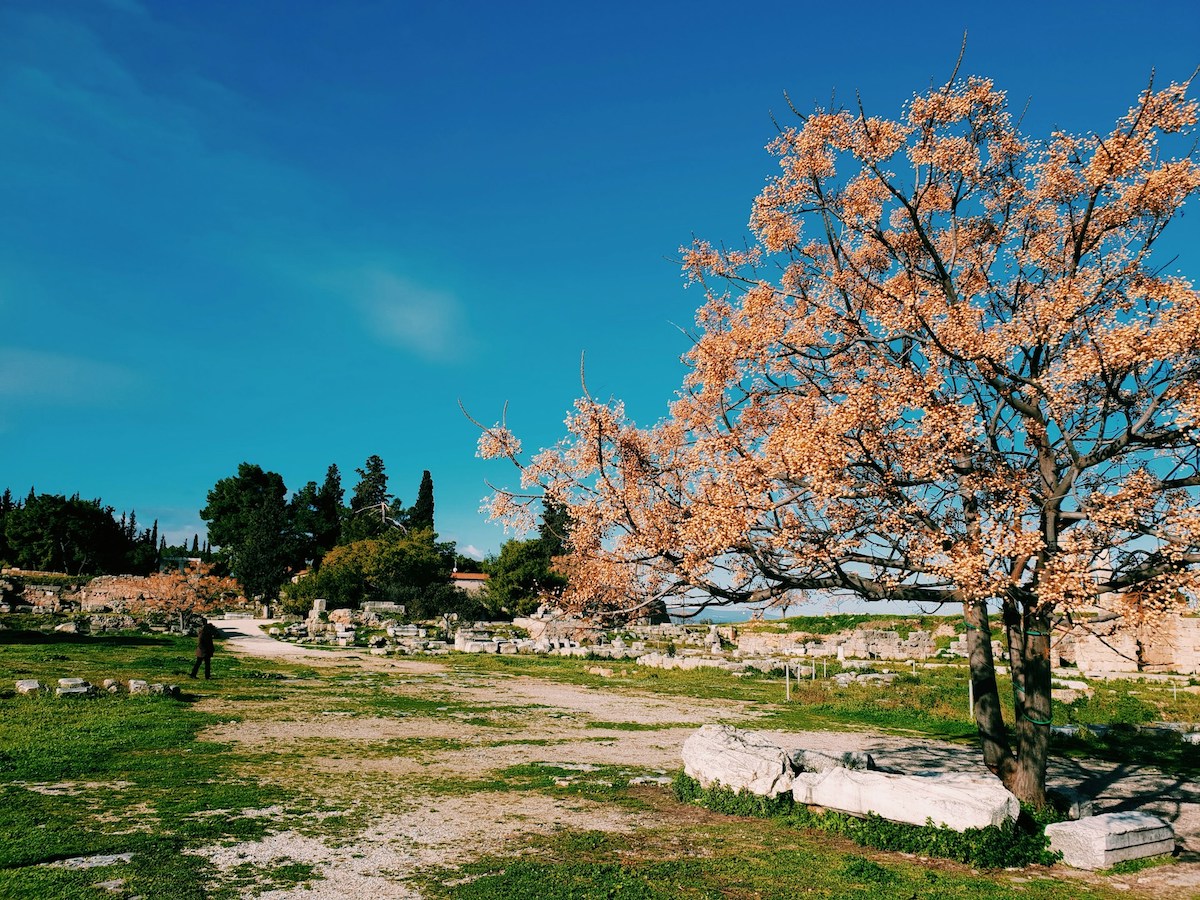
The vast collection of the Corinth Archaeological Museum
After you stroll throughout the archaeological site make sure you check out the Archaeological Museum of Ancient Corinth.
This museum houses a remarkable collection of artifacts, sculptures, pottery, and mosaics from Ancient Corinth. It’s located right next to the archaeological site.

Aryballos and amphoras
In ancient times Corinthian pottery consumed the ancient markets, and the city-state was famous for the aryballos, a tiny flask used to store perfume. Corinth was also renowned for its large storage jars called amphoras. People used them to transport olive oil, wine, and other goods across the Mediterranean.
But it wasn’t just the products that made Corinth famous; it was their dedication to art and craftsmanship. They invented the “black-figure technique” for Greek pottery and preserved stunning Roman floor mosaics depicting local and exotic flowers.
The museum showcases these crafts and their impact on Corinth and the wider region.

Kouroi of Klenia statues
Exciting recent additions to the archaeological museum include the two famous Kouroi of Klenia. They were confiscated from antiquity smugglers in the nearby village of Klenia in 2010.
Dating from around 530 B.C.E., these two sculptures were found shattered to pieces, but have now been restored to their complete selves.
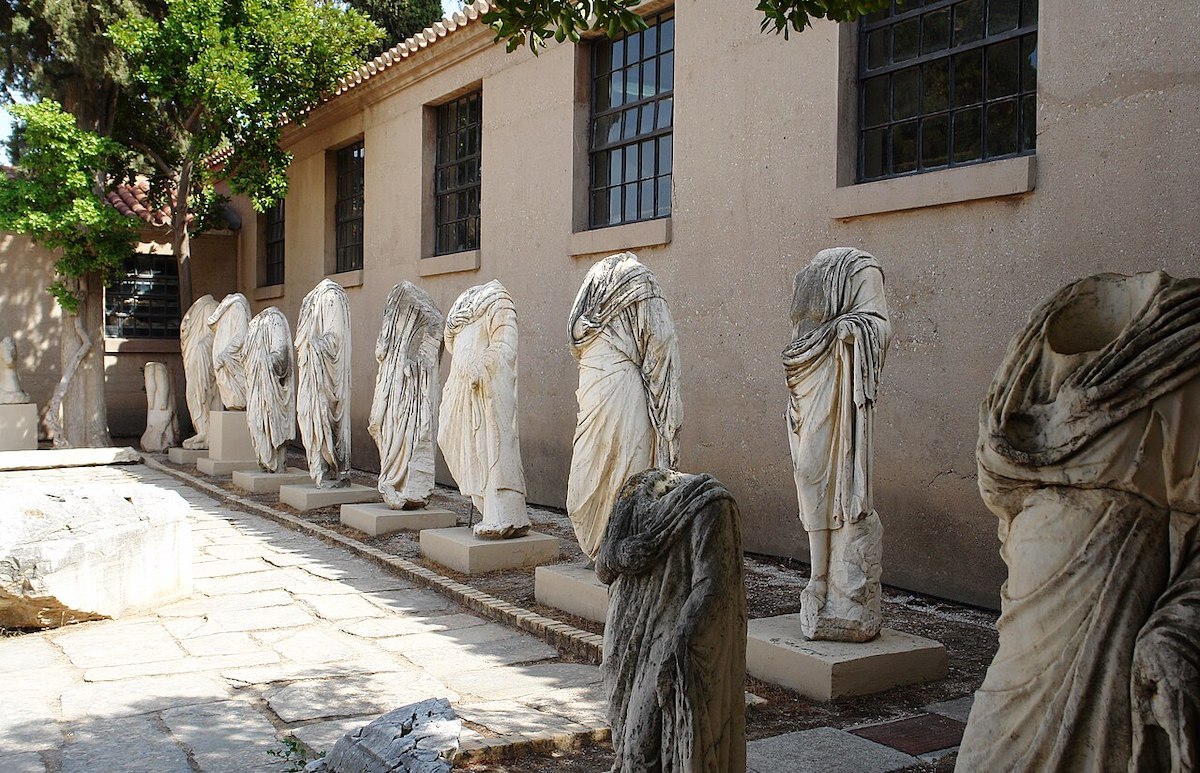
Take a hike to an ancient fortress
If you’re feeling energetic, make the climb to the Acrocorinth, the ancient and medieval fortress that overlooks the modern city.
This fortress was used throughout history and has fortifications and structures from the Classical, Frankish, Venetian, and Ottoman periods. You’ll find the remains of several temples Inside the fortress, used and re-used throughout history.
Insider’s Tip: The hike is steep and takes at least 45 minutes, but the views from the top are stunning. Once you reach the ruins, you can explore the fortifications and learn about the site’s strategic significance.
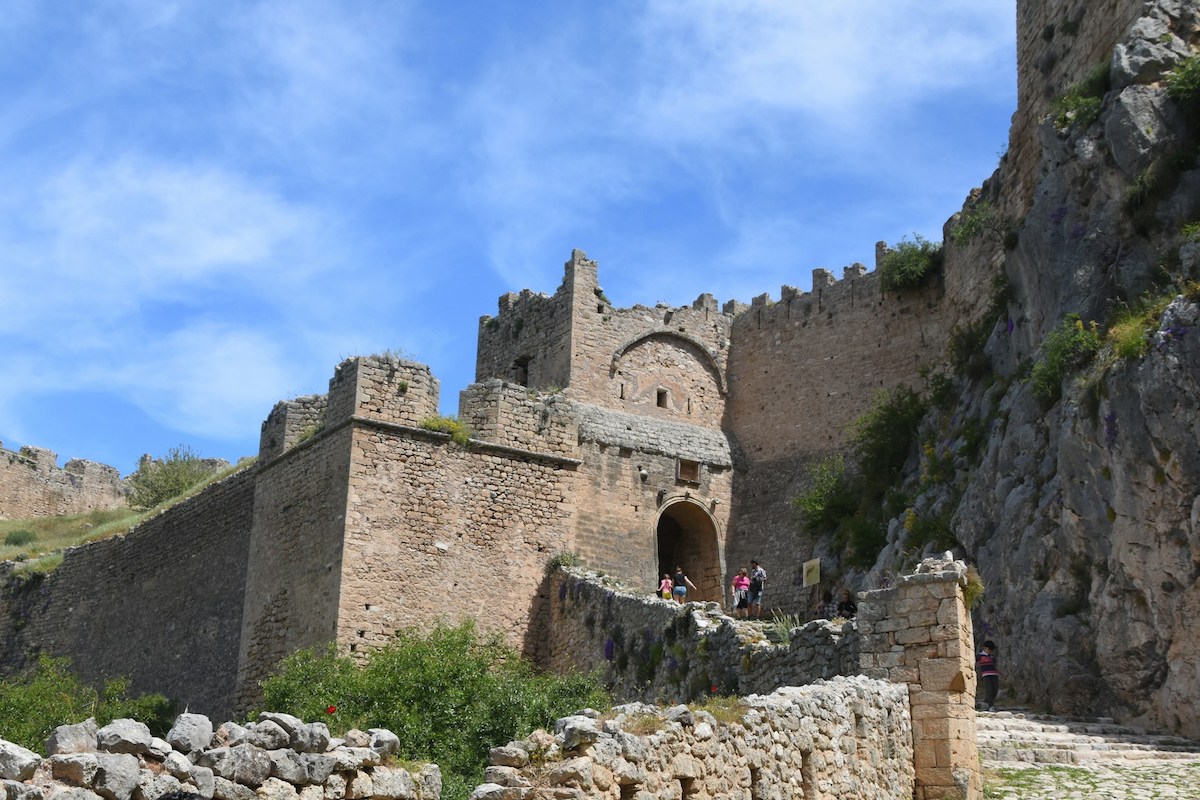
End the day at a local taverna
After your long day of historical exploration, relax at a local taverna in the nearby village and savor popular Greek food. If you’d rather enjoy dinner back in the capital, here are some of the best restaurants in Athens.
One of our favorites is the traditional taverna Tassos, a tavern and inn just below Acrocorinth that is as authentic as it gets. From the simple rustic decoration to the local fare—think wine made from their own vineyards and olive oil pressed from their own olive trees—this tavern guarantees the full village experience.

Throughout its history, Ancient Corinth played a vital role in Greek affairs, shaping the cultural and economic landscape of the region, leaving an enduring legacy in the annals of classical civilization. Visiting today is an excellent way to get a broader look at Greek history, and explore the country more deeply.

